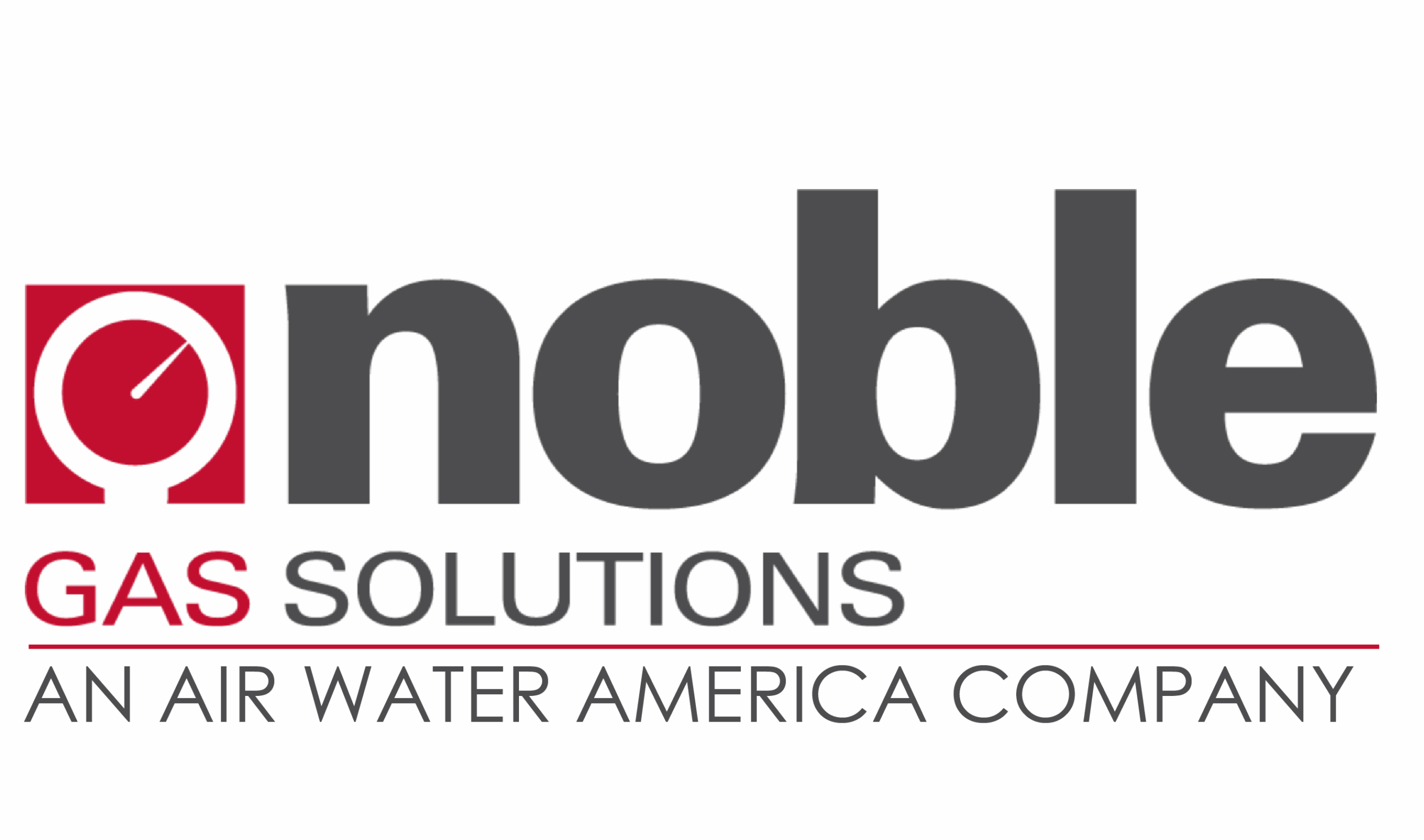GAS & CYLINDER SAFETY
Some of the gases we provide are flammable, toxic, or corrosive. As with any chemical or compressed gas improper use can cause serious injury or even death. Please be sure to review all available safety precautions when handling these gases.
If you have any questions regarding the safe handling or use of any product we supply, please contact us.
Gas Safety
While industrial and specialty gases have many wonderful uses, they can also bring new safety hazards to the workplace. It is important that any site using gases should plan to avoid these potential problems by implementing the correct training and procedures. Our Noble Technical Team can help you accomplish this.
High-Pressure Hazards
Gases are often transported in high-pressure cylinders. These cylinders all have a valve at the top to which is attached a regulator so that gas can be drawn off at desired rates. If a valve or regulator is struck and broken off of the cylinder, the cylinder will move violently depending on the remaining pressure. Also, the piping or vessels into which high-pressure gas is introduced must be able to support such pressures or they could rupture violently.
Inhalation Hazards
A life-supporting atmosphere should contain between 19% and 23% oxygen by volume. Some industrial gases are inert and cannot be detected by any human sense. If these gases accumulate, a zone could be created that is outside of this life-supporting range. Any person entering this zone could be endangered. Other gases may be toxic to breathe and doing so must also be avoided.
Extreme Cold Hazards
Liquid or cryogenic gases are extremely cold, reaching temperatures as low as -320°F for nitrogen. Human contact with such low temperatures results in immediate destruction of tissue or can cause severe frostbite.
Flammability Hazards
Certain gases are flammable and when mixed with air or oxygen can become explosive in a confined space and when ignited from any cause.
Oxidizer Hazards
Some gases, like oxygen, are labeled as oxidizers. As concentrations of oxidizers rise above the normal 21% found in air, materials that normally do not burn in air may burn with explosive violence. And any fire, once started, may burn faster and hotter. The higher the oxidizer concentration, the greater the hazard.
Cylinder Safety
Moving Cylinders
Cylinders and containers must always be moved carefully. Mishandling that results in a damaged valve or ruptured cylinder can expose personnel to the hazards associated with these gases. In addition, most gas cylinders are heavy and bulky. A cylinder striking someone or pinching a finger, toe, or another extremity is a common cause of injury. For these reasons, all cylinder handlers must always wear certain minimum personal protective equipment prescribed by OSHA:
- Gloves to protect the hands against common pinching injuries.
- Safety glasses to protect the eyes against injuries associated with pressure release.
- Safety shoes with metatarsal support to protect against foot injuries from falling cylinders.
- Before moving a cylinder to the storage area or point of use or before returning the cylinder to the supplier, ensure the following: * The outlet valve is fully closed. * The outlet valve dust plug or pressure cap is on tight for cylinders equipped with these protective devices. * The valve protection cap is properly secured in place on cylinders with neck threads. Note: Valve caps must always be in place while moving or transporting cylinders or when they are in storage.
While moving full or empty cylinders:
- Always use carts or hand trucks designed for this purpose.
- Never drop cylinders or allow them to strike each other violently.
- Never lift cylinders by the cap or with a lifting magnet.
- After moving a cylinder to its point of use, secure the cylinder in place. Use cylinder stands, clamps, or other securing devices recommended by your supplier.
Opening and Closing Valves
Observing a few simple rules when opening and closing valves can prevent damage to valves and equipment and add years of useful service life to the valves. The proper way to open any cylinder valve is to first crack the valve, then open it slowly by turning the handle or stem counterclockwise. This allows equipment to gradually adjust to full pressure. Stop turning as soon as there is any resistance. Turning the valve handle or stem too far in the open position can jam the stem, causing damage and leaks and preventing later closure. Likewise, overtightening when closing a valve can damage or permanently distort the seat and result in leakage.
Note: Never open a cylinder valve that is not connected to a pressure regulating device.
Advanced Cylinder Management (ACM)
We attach a barcode to every cylinder and track each individual cylinder from the fill rack through delivery to the customer, until its return. Cylinders are scanned upon delivery and our drivers print a transaction receipt on the spot, showing each barcode delivered and picked up. At the end of each month, a cylinder rental statement is generated for the customer that shows each individual barcode residing on-site. ACM allows us to efficiently move cylinders in circulation, or remove any damaged ones from future use. We take pride in knowing the status of each of our cylinders from cradle to grave.

